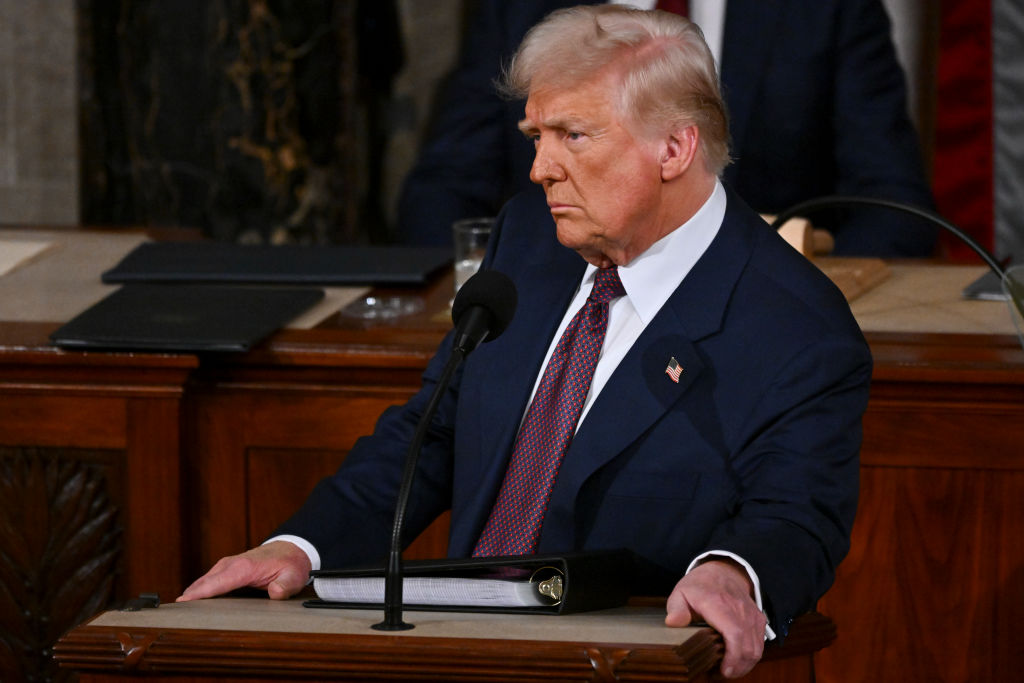Biden Administration Considering Raft of Changes to Labor Rules: Kiplinger Economic Forecasts
The Department of Labor is planning new regulations on OSHA reporting, contract worker classification and possibly a new overtime salary minimum.


Workers and employers are awaiting new regulations from the Dept. of Labor. To help you understand what is going on and what we expect to happen in the future, our highly-experienced Kiplinger Letter team will keep you abreast of the latest developments and forecasts (Get a free issue of The Kiplinger Letter or subscribe). You'll get all the latest news first by subscribing, but we will publish many (but not all) of the forecasts a few days afterward online. Here’s the latest...
Here’s an update on the timeline for some key Dept. of Labor regulations. New rules on electronic reporting for injuries and illnesses are up first, likely to be issued in the coming weeks after initially being slated for March. OSHA, the Occupational Safety and Health Admin., has released a draft rule that nixes some reporting requirements for establishments with 250 employees or more if they are not in a high-hazard industry. By contrast, establishments with 100 or more employees in high-hazard industries, as designated by OSHA, would be required to promptly report worker injuries and fatalities to the agency.
Next up is a new overtime salary threshold. The Biden administration has not yet revealed a specific number to replace the $35,568 threshold set by the Labor Dept. under Donald Trump. Employees paid below that figure are eligible for time-and-a-half pay when they work more than 40 hours per week.
From just $107.88 $24.99 for Kiplinger Personal Finance
Become a smarter, better informed investor. Subscribe from just $107.88 $24.99, plus get up to 4 Special Issues

Sign up for Kiplinger’s Free Newsletters
Profit and prosper with the best of expert advice on investing, taxes, retirement, personal finance and more - straight to your e-mail.
Profit and prosper with the best of expert advice - straight to your e-mail.
The last of the Dept. of Labor's changes, a stricter rule for classifying workers as independent contractors under the Fair Labor Standards Act is expected no later than October. The Labor Dept. has proposed a six-part test for whether a worker qualifies as an employee or an independent contractor. Among the components of the test: the opportunity for profit or loss, investment by worker and employer, degree of permanence of a work relationship, nature and degree of control, skill and initiative and the extent to which the work performed is an integral part of an employer’s business.
And in related news a federal labor panel has retooled its independent contractor test, potentially making it easier for gig workers and others to unionize under the National Labor Relations Act. The National Labor Relations Board has overturned a Trump-era decision that elevated “entrepreneurial opportunity” over other factors when deciding whether a worker was an employee or contractor, returning to an earlier, Obama-era standard. Both the Trump and the Obama tests focus on the same 10 factors…despite their differences, including the amount of control the company has over the work, the skill required for a job and the pay... Note that workers won more classification battles with the Trump-era test than the Obama one, but the issue was also litigated less frequently under Trump.
This forecast first appeared in The Kiplinger Letter, which has been running since 1923 and is a collection of concise weekly forecasts on business and economic trends, as well as what to expect from Washington, to help you understand what’s coming up to make the most of your investments and your money. Subscribe to The Kiplinger Letter.
Read more
Profit and prosper with the best of Kiplinger's advice on investing, taxes, retirement, personal finance and much more. Delivered daily. Enter your email in the box and click Sign Me Up.

-
 CD Maturing Soon? Here's What to Do Next
CD Maturing Soon? Here's What to Do NextThese strategies of what to do when you have a CD maturing soon will have you maximizing returns even with rate cuts.
-
 How to Make 2026 Your Best Year Yet for Retirement Savings
How to Make 2026 Your Best Year Yet for Retirement SavingsMake 2026 the year you stop coasting and start supercharging your retirement savings.
-
 You Saved for Retirement: 4 Pressing FAQs Now
You Saved for Retirement: 4 Pressing FAQs NowSaving for retirement is just one step. Now, you have to figure out how to spend and maintain funds. Here are four frequently asked questions at this stage.
-
 What to Expect from the Global Economy in 2026
What to Expect from the Global Economy in 2026The Kiplinger Letter Economic growth across the globe will be highly uneven, with some major economies accelerating while others hit the brakes.
-
 Shoppers Hit the Brakes on EV Purchases After Tax Credits Expire
Shoppers Hit the Brakes on EV Purchases After Tax Credits ExpireThe Letter Electric cars are here to stay, but they'll have to compete harder to get shoppers interested without the federal tax credit.
-
 The Economy on a Knife's Edge
The Economy on a Knife's EdgeThe Letter GDP is growing, but employers have all but stopped hiring as they watch how the trade war plays out.
-
 Banks Are Sounding the Alarm About Stablecoins
Banks Are Sounding the Alarm About StablecoinsThe Kiplinger Letter The banking industry says stablecoins could have a negative impact on lending.
-
 Japan Enters a New Era of Risk and Reform
Japan Enters a New Era of Risk and ReformThe Kiplinger Letter Japan has entered a pivotal moment in its economic history, undertaking ambitious policy and structural reforms to escape from decades of stagnation.
-
 After Years of Stagnant Growth, Hope Emerges for EU Economy
After Years of Stagnant Growth, Hope Emerges for EU EconomyThe Kiplinger Letter Can a German fiscal push outweigh French political peril?
-
 Trump's Economic Intervention
Trump's Economic InterventionThe Kiplinger Letter What to Make of Washington's Increasingly Hands-On Approach to Big Business
-
 AI Start-ups Are Rolling in Cash
AI Start-ups Are Rolling in CashThe Kiplinger Letter Investors are plowing record sums of money into artificial intelligence start-ups. Even as sales grow swiftly, losses are piling up for AI firms.